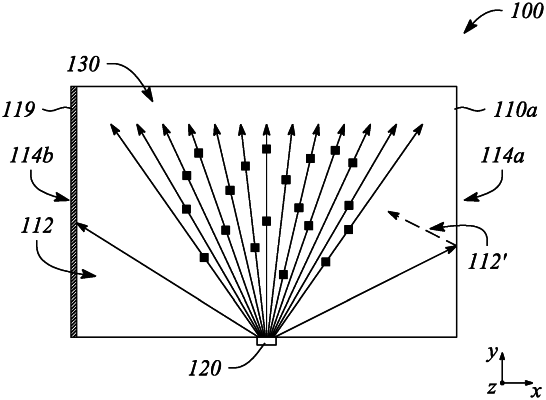| CPC G02B 27/106 (2013.01) [G02B 5/1861 (2013.01); G02B 6/003 (2013.01); G02B 6/0035 (2013.01); G02B 6/0068 (2013.01)] | 12 Claims |

|
1. A static multiview display comprising:
a light guide configured to guide light beams;
a light source at an input location on the light guide, the light source being configured to provide within the light guide a plurality of guided light beams having different radial directions from one another;
a plurality of diffraction gratings configured to emit directional light beams representing different individual view pixels of a static multiview image, each diffraction grating of the diffraction grating plurality being configured to scatter out from a single radially directed guided light beam of the guided light beam plurality a corresponding single directional light beam toward a different one of the individual view pixels; and
one or both of an absorbing layer at a sidewall of light guide and a slanted sidewall of the light guide, the absorbing layer being configured to absorb guided light beams incident on the sidewall and the slanted sidewall having a slant angle configured to direct guided light beams reflected by the slanted sidewall away from the diffraction grating plurality;
wherein an emission pattern of a directional light beam of the directional light beams is wider in a direction parallel to a direction of propagation of the guided light beam plurality than in a direction perpendicular to the direction of propagation of the guided light beam plurality.
|